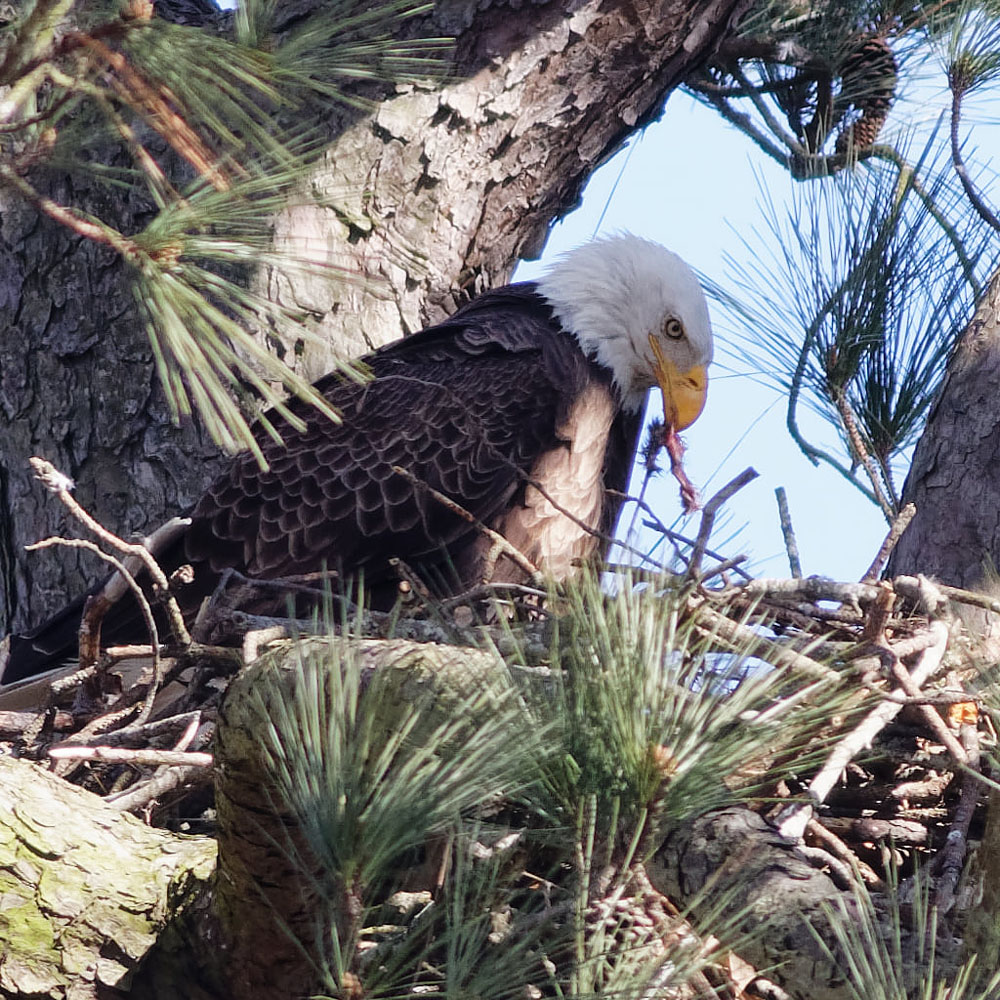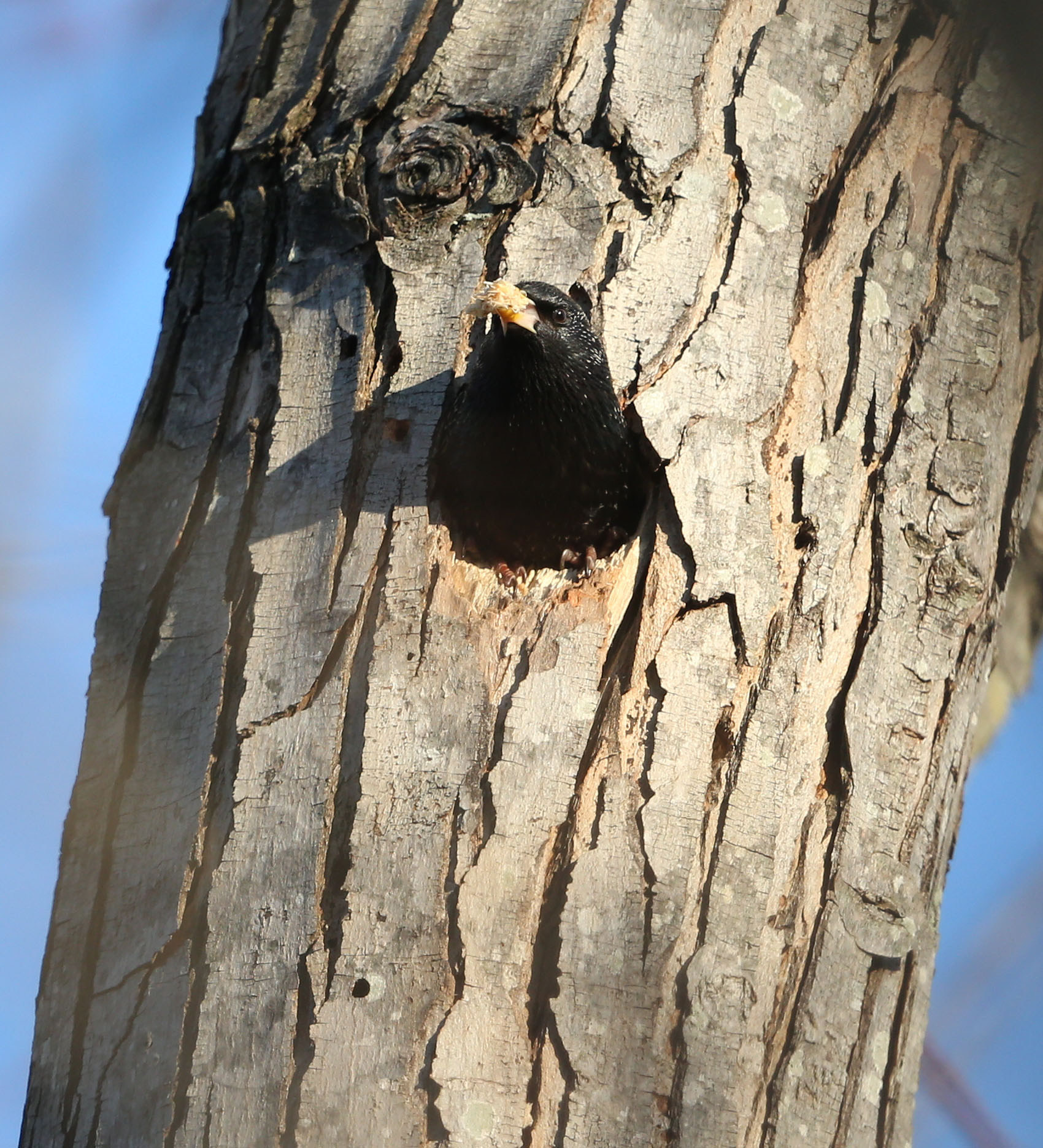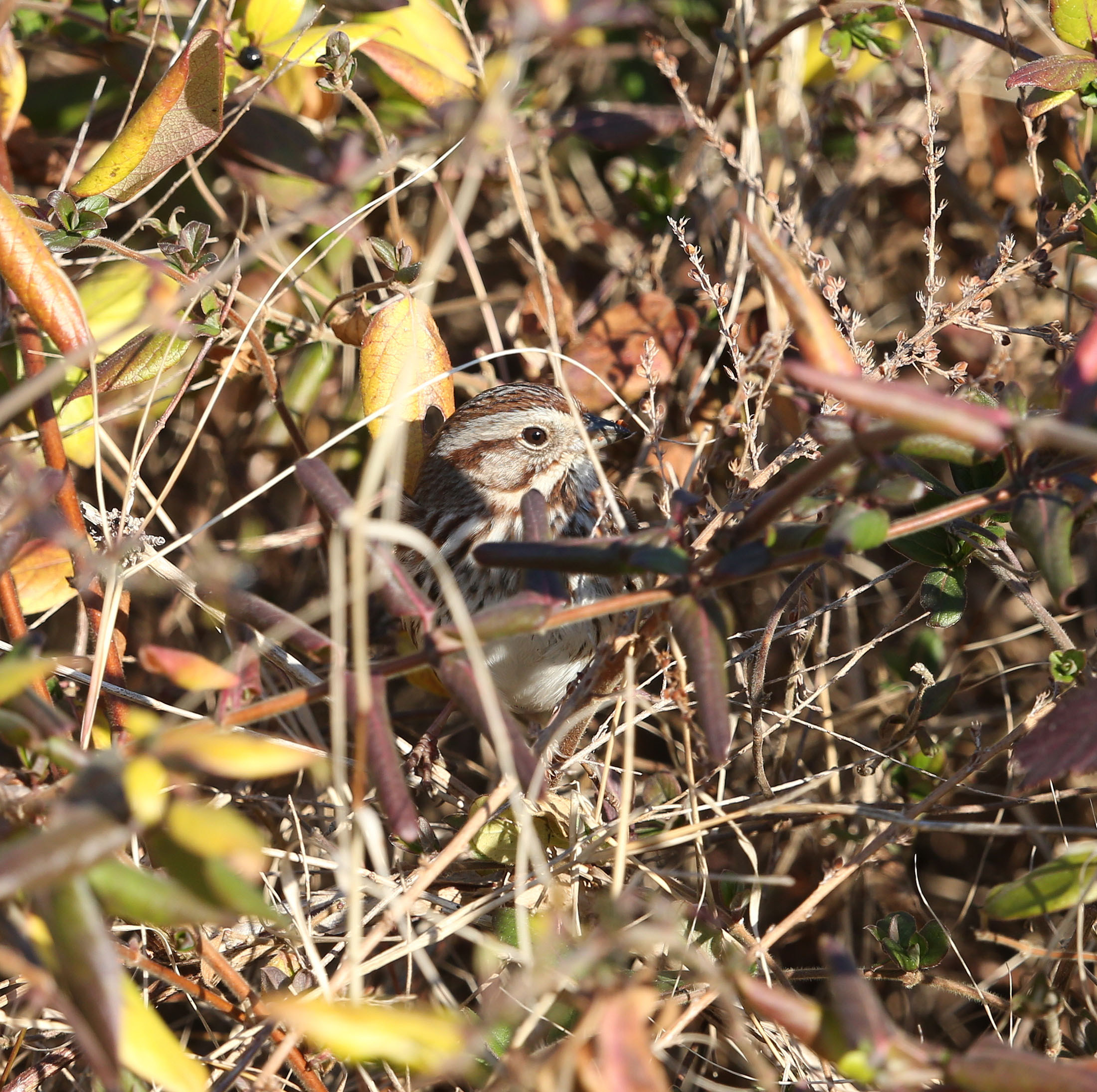We’re closing in on blog #100. It’s interesting. My most-read blog to date is one I wrote a few months back entitled “A Life Lesson.” Why are readers drawn to it? It’s mostly about European Starlings, so it’s not the content. I think it’s the title and the promise that readers will learn something about life and how to live it. That sort of learning is an ongoing quest for most of us. It also helps explain why autobiographies and biographies top most of our reading lists. We take our cues from other people and always have. That’s my “thought for the day.”
Another thought for the day is that spring is around the corner. Major League pitchers and catchers have reported, position players aren’t far behind, and some SE Virginia Bald Eagles are feeding young.

The Starling and the Red-bellied
Speaking of Bald Eagles (and European Starlings), I visited the Portsmouth, VA eagle’s nest on 2/21. Before I laid eyes on the eagle, I heard and spotted a Red-bellied Woodpecker. Unlike the Downy that had built a home in a snag, it appeared that the woodpecker had built a home in a dead or dying limb of a live tree. I didn’t watch the construction, so I can’t be sure. This is one of those photos that I look at and say, “I didn’t create it, light did.”

But as I looked away, a European Starling showed up and displaced the woodpecker. I never even saw the woodpecker leave.

And then the starling continued the work of excavating the hole (or at least removing the wood chips). Unlike the Downy Woodpecker featured in “Whispers of Spring,” the European Starling just took off with the chips and deposited them elsewhere. There wasn’t any of that violent head-shaking.

European Starlings, like bluebirds, are secondary cavity nesters. They use cavities created by other birds. Starlings may be admired for their plumage and their intelligence, but they’re reviled for their aggressiveness and for doing what the one above apparently did in ousting the woodpecker. This is something else I’ve never seen in the field.
The Eagle’s Nest
After witnessing the above, I looked up at the eagle’s nest; I hadn’t seen any activity there yet. But after a few minutes I noticed a little area of pure white just above the top. And it moved. My first thought was “eaglet,” but I soon realized it was one of the adults. No eaglets yet. My second thought was how do I capture the eagle’s head and not the nest? So I picked up my camera, quickly switched from Single-point AF to Single-point Spot AF (for pinpoint focusing), and held the camera and lens steady. I may have rested my lens on one of my side mirrors or on the edge of the truck bed. I do that kind of thing a lot. Anything to better stabilize the lens. Here’s what I came away with.

That experience made me think of another photo I took using Spot AF. (I generally use the center AF point and Single-point AF.) I jokingly refer to it as my “Where’s Waldo” image. It’s also an environmental image if ever there was one. Now, I’m a big believer in “context,” but usually not this much!

And This Just In
Thanks to Curtis Warrenfeltz for the photo of the eagle feeding young. It’s a great shot. I joked with him that he either used a mighty long lens, or he lives in the apartment building next door. Along those lines, Bald Eagles usually build their nests at least several stories up. Also, thanks to those who commented on the “Swampie” photo at the end of the “Finding Humor, Finding Birds.” Reuben, for one, wrote, “Wonderful composition.” That’s high praise.
Photographer Jaymes Dempsey has written a piece about camera focus points. I recommend it highly.
Quip, Question, Quote
Here’s a quote from a reader. Wayne Brindle left this comment after reading “Finding Humor, Finding Birds”: “I love reading your thoughts and seeing your photos. If you like humor, take a look at this: https://amzn.to/35kVfYq
Wayne”
I share that to encourage you to check out his book. My wife and I made the decision to buy after reading the following from one of the reviewers: “The breadth of jokes contained is astonishing, and the overall composition of the jokes into related categories will provide you many moments where you will truly laugh out loud.”
And who doesn’t need to laugh out loud—especially now?
Dave, thanks so much for posting links to your wonderful photo essays. I always enjoy your stories and photography tips, and marvel at the images you are able to capture. Your story and photos of the Red-bellied Woodpecker and European Starling reminded me of the Red-bellied Woodpeckers that excavated a nest hole in a large dead trunk of a living Black Cherry tree in my yard. I first noticed the male working on the hole in early February, 2018, and I soon began taking photos of the process from a second story window of my house. The male was eventually joined by a female and they took turns excavating and cleaning sawdust and woodchips from the hole until it was completed in early May. By mid-May, I was excited to see the female enter the hole with food in her mouth, but within a few days the woodpeckers were displaced by Starlings. I have one photo of a marauding starling after it exited the hole with what looks like a pink newborn Red-belly in its mouth.
A male Red-belly has made additional holes in this snag since 2018 and has been working there periodically this winter. However, Starlings are around again this year. They have nested in that original hole for 3 years and I suspect they will do the same this year.
I posted a few photos of the Red-bellies’ activities, including a brief video of them expelling sawdust, in a blog I wrote about birds that have nested in my yard. See http://backyardsfornature.org/?p=1885
Thanks again for sharing your wonderful photos and observations, Dave!
Warmly,
Barb Elliot
Co-Director, Backyards for Nature
LikeLike
Barb, Thanks for your kind words. Heartbreaking story about the woodpecker pair. Loved the photo of the Red-bellied releasing the wood chips. Those are moments we don’t forget. I’m sure you saw my photos of the female Downy doing the same. She was so blazing fast, it reminded me of an MLB pitcher throwing heat! I see you’re a big Doug Tallamy fan, as am I. Great guy. If you’re interested, I referenced him and others in a piece I wrote for the Chesapeake Conservation Landscaping Council. Here’s the link: https://www.chesapeakelandscape.org/2020/07/wild-places-matter/. I contacted him later, and he told me he really enjoyed it. Feel free to use it or anything else I’ve written on your site. I just ask that you provide a link to mine. Happy to have you as a reader.
LikeLike
Cool beans Dave!
LikeLiked by 1 person